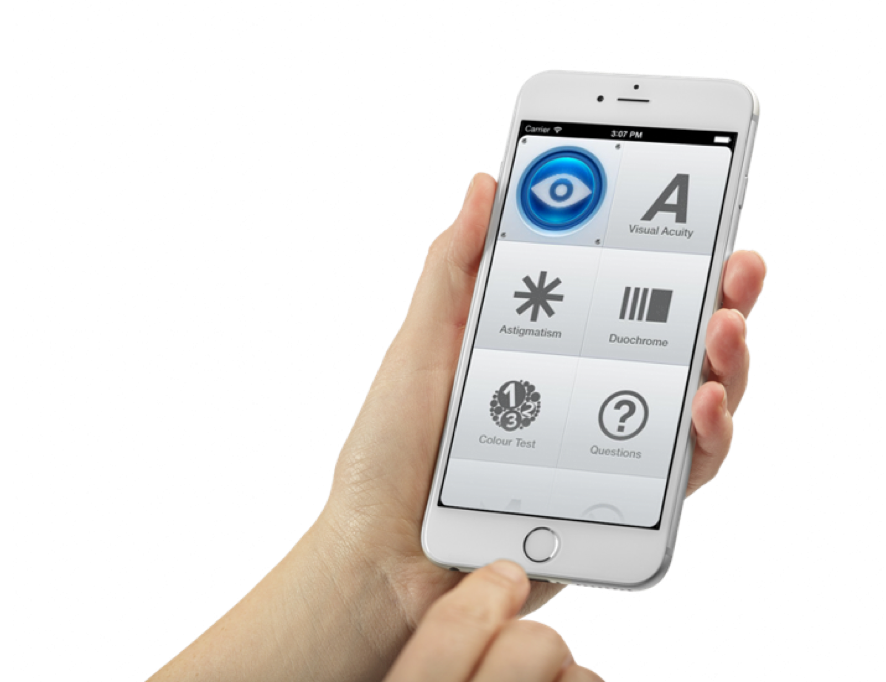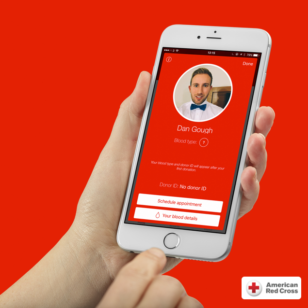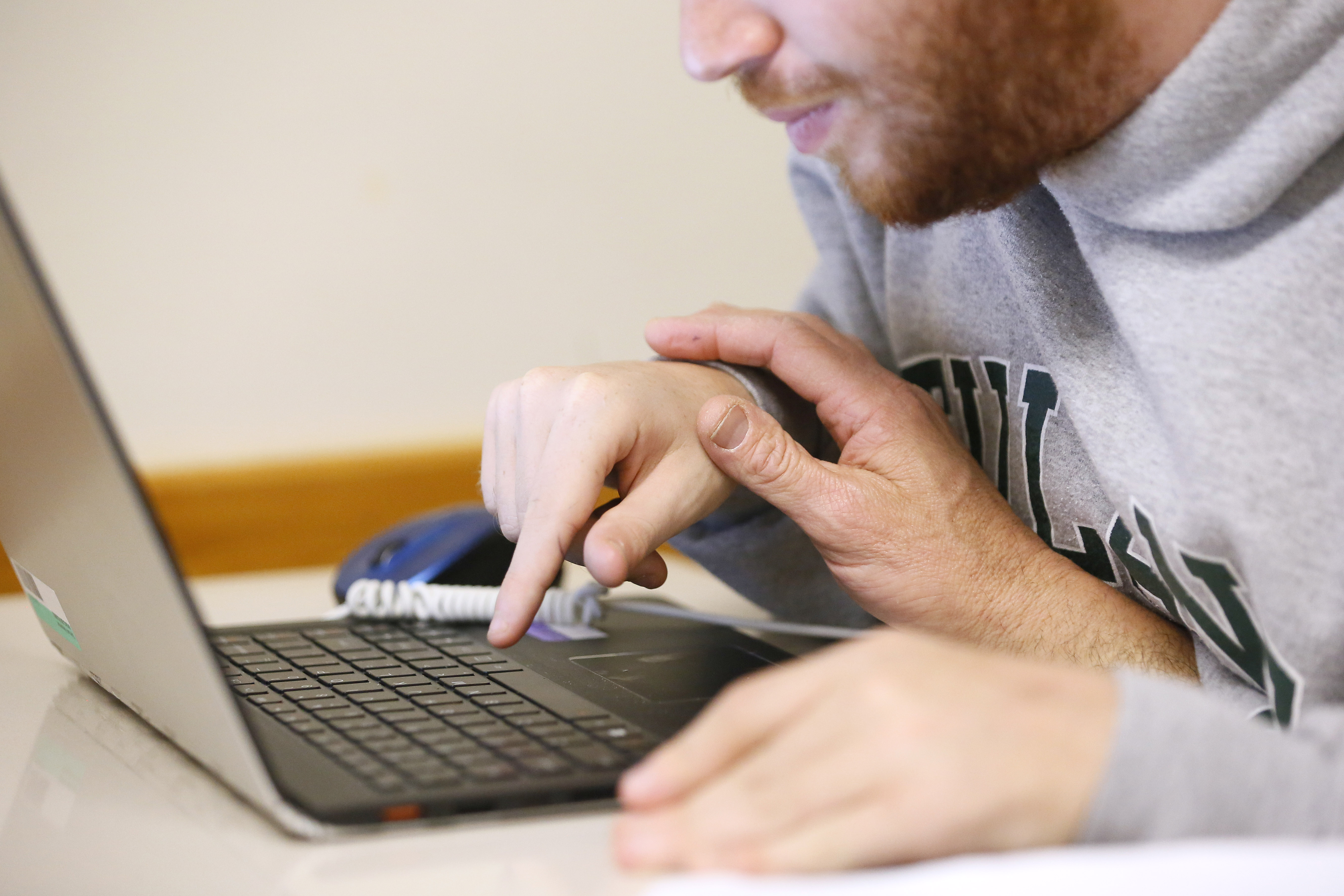
A screenshot from 3SidedCube’s Essilor Vision Test App, one of the company’s first apps that topped the US iTunes Charts as the number one medial app. (3SidedCube)
Funding a mobile game or a celebrity app is often easier than finding backers for special needs and not-for-profit applications. But the growing interest in mobile health is helping bridge the gap.
Depending on their function and subject matter, apps are either funded by big companies, public donations, or paid for by interested organizations and individuals. Funding is typically available for research and development, and for proofs of concept – early demonstrations showcasing the feasibility of a product.
“There are some certain hot areas like diabetes that will get a lot of funding and that will really push people to that area,” said Duncan Cook, Director of 3SidedCube, a developer of mobile apps for the not-for-profit sector. “And there are a lot of supporters of even smaller areas that will put their backing in because they’ve got family members affected. So it’s definitely doable.”
But it varies. “It’s based on how strong the argument is,” he said, meaning that the developer has to make sure he has a “good case” to convince backers to fund the app in question. And ultimately, it is a selection process where the best apps “rise to the top.”

The American Red Cross Blood Donor App won 3SidedCube a Webby for best Health App in the world. (3SidedCube)
UK-based 3SidedCube works both with funded clients and those that have to seek funding to develop the apps they need. “Often they will have a major backer and they will … pitch the idea to the major backer,” he said. “If they like it, they will then fund it and give you money.”
In some cases, vocal and well-organized groups like autism communities are able to reach people who can relate to their cause and attract funding for various technologies. And special needs and nonprofit apps that have received press coverage and good reviews can generate interest and open the door to more funding.
One such app, Be My Eyes, was designed to let seeing people come to the aid of blind users.
“It has already had a huge impact,” said Cook. “Look at the apps … for blind people. … People can sign up and be the eyes of blind people. It’s had a huge impact.”
“It’s harder for individuals than companies to get funding,” said Cristen Reat, co-founder of BridgingApps, a Houston, Texas-based Easter Seals program that provides access to educational and therapeutic tools, and offers app reviews and support to help people with disabilities.
“When you ask the question about funding for individuals … for apps”, she said, “it’s actually quite challenging.”
Ironically, there is no shortage of funding sources. Many U.S. states provide funding for assistive technologies, for example. But Reat, a mother of two children with special needs and chronic conditions, questioned whether the money benefits those who need it the most. “Are the people who really need it getting it and benefiting from it? We see that’s a problem.”

Sam Alexander, Ben Alexander’s father, assists Ben, who has non-verbal autism, during a math language class at Tulane University in New Orleans, March 2, 2016. (AP)
Getting access to these funds and qualifying for support is also “very tricky,” she said. This is particularly true of schools, often the last to adopt mobile solutions. This is why schools and families “are looking outside of the school systems for funding” to get technologies for non-verbal children, for example, including apps like SPEAKall! and SPEAKmore.
“We see people come in everyday who are, for example, of school age and they don’t have access to that technology in school,” she said. “So they are coming to us looking for other funding sources to get that technology.”
A lot of the money from state or private contributors also “dries up when you’re an adult,” she said. And so in schools, “you really have to advocate for getting access to even some other traditional technologies that are out there.”
Insurance companies and health care providers should pay for some of these technologies,” she argued. “If some children and adults are able to have access to some of the mobile devices just to use for their daily activities … then some of those health apps should also be put there.”
Reat believes this would be a cost-effective investment. Giving non-verbal children an iPad or tablet “with one or more sophisticated communication apps on it” would be a lot cheaper than a $15,000 … traditional assistive technology device.”
“Why would there not be the knowledge that that’s very cost-effective?” she asked. “And we’re just not quite there yet.”
But interest is growing. And as more and more organizations and agencies approach mobile health, Cook projects that technology will have a “huge impact” on the nonprofit base in the next few years.
“It’s just not going to be as big as e-commerce or banking or any of those other areas that make huge amounts of money,” he said, although he hopes that the “feel-good side of it” will appeal to people and attract funding.
But there is much room for improvement, he added. “We’ve only really just scratched the surface. “I think … there’s a lot more to come.”
